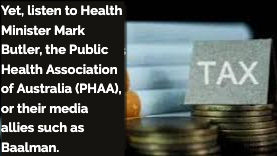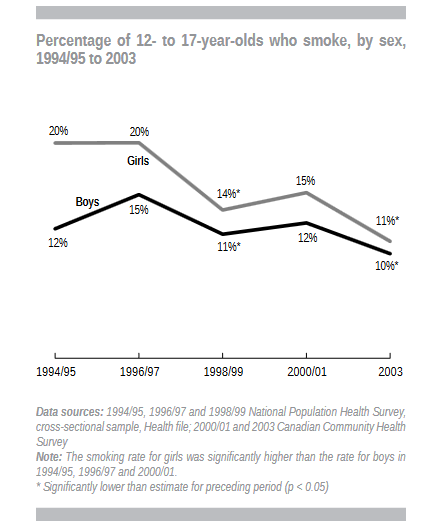Australia’s Illicit Tobacco Crisis: How Baalman, Butler and the PHAA Are Gaslighting the Public
- Alan Gor

- Sep 7
- 3 min read

Alan Gor 07 September 2025
Australia today finds itself in the grip of a tobacco control disaster of its own making. With the world’s highest cigarette prices, a violent illicit market worth billions, and record levels of organised crime involvement, the crisis is undeniable. Yet, listen to Health Minister Mark Butler, the Public Health Association of Australia (PHAA), or their media allies such as Baalman. You’ll hear a very different story: nothing to see here, it’s all just tobacco industry spin.
That’s not just misleading, it’s dangerous. By refusing to acknowledge the consequences of their own prohibitionist policies, Australia’s public health establishment is leaving smokers and communities to pay the price, while organised crime counts the profits.
Baalman’s “Explainer”: Analysis or Apologism?
Baalman’s recent “explainer” piece tries to recast Australia’s illicit tobacco crisis as little more than an industry talking point. His key claim? That the link between high excise taxes and illegal trade “cannot be proven.”
This is the classic strategy of denial: when reality doesn’t fit the narrative, dismiss it as unprovable. But the evidence is overwhelming:
Firebombings: Over 250 violent attacks on tobacconists and warehouses linked to illicit tobacco in just 18 months.
Gang Expansion: Major criminal groups, already embedded in drugs and weapons, now diversifying into tobacco because of the guaranteed profits.
Consumer Evidence: Australians themselves, especially low-income households, openly admit they are buying illicit cigarettes because legal packs at $30–$50 are unaffordable.
You don’t need a PhD in public health to connect the dots. Pretending these events aren’t tied to government policy is wilful blindness.
The New Zealand Contrast
The comparison with New Zealand is telling. Both countries share high ambitions in tobacco control, but New Zealand’s illicit market has remained small. Peer-reviewed BMJ research confirmed that the effect was statistically insignificant across 2012–2023.
Why the difference? New Zealand pursued high excise but also regulated vaping as a harm reduction strategy. Smokers had an off-ramp.
Australia, by contrast, engineered the perfect storm:
Record excise hikes pushing cigarette prices to around $50 a pack.
A de facto vaping ban blocking adults from accessing affordable, legal alternatives.
No relief valve to redirect demand away from criminal supply.
The result? A runaway black market in Australia, and a relatively contained one across the Tasman.
The International Misdirection
Baalman parrots the line that “countries with higher taxes often have lower illegal trade.” On the surface, that’s true, but only in countries that allow legal, regulated access to safer nicotine alternatives.
The UK, US and New Zealand all fit this profile. Smokers priced out of cigarettes in those countries can transition to vaping. Australia is the outlier. Here, smokers face two choices:
Pay $50 for a legal pack.
Buy illicitly for $10–$15.
No other high-tax country has created this binary. That is why Australia’s illicit trade is booming while others remain stable.
The Canada Strawman
Baalman also cites Canada in the 1990s, when tax cuts did lead to increased smoking. But this is a red herring. Canada slashed taxes without offering any safer alternatives.
The real lesson isn’t “never cut excise”, it’s that affordability shapes behaviour. When legal cigarettes are unaffordable and safer alternatives are banned, demand doesn’t vanish. It simply shifts into the hands of organised crime.



Excise Hikes and Prohibition: The Perfect Storm
For more than a decade, tobacco taxation has been pushed to punitive levels in Australia. Packs now cost between $30 and $50, among the most expensive in the world. The consequences are clear:
Entrenched inequality: Low-income Australians, Indigenous peoples, and people with mental health conditions carry the heaviest financial burden.
A billion-dollar black market: Independent estimates put illicit sales at over A$6 billion annually, rivalling the legal market.
Rising youth smoking: Both Roy Morgan and AIHW data confirm the first documented increase in smoking among 18–24 year olds in decades.
Meanwhile, enforcement is lauded as the answer. However, despite increased raids, seizures, and task forces, the supply has not been significantly reduced. Why would they? When legal and illicit prices are separated by $30, demand will always find its way underground. Pretending otherwise is economic denialism.
The Consequences No One Wants to Own
Australia’s illicit tobacco trade is no longer just a health issue. It is a law-and-order crisis with consequences for the economy, governance, and public safety.
Revenue Loss: Billions in excise leak from the budget every year.
Public Safety: Firebombings and gang violence have become routine.
Consumer Harm: Smokers are forced into a perverse choice: unaffordable legal packs or unsafe illicit supply.
Yet instead of facing these outcomes, Butler, the PHAA, and their defenders cling to prohibitionist dogma, insisting that acknowledging the crisis would “play into industry hands.”


